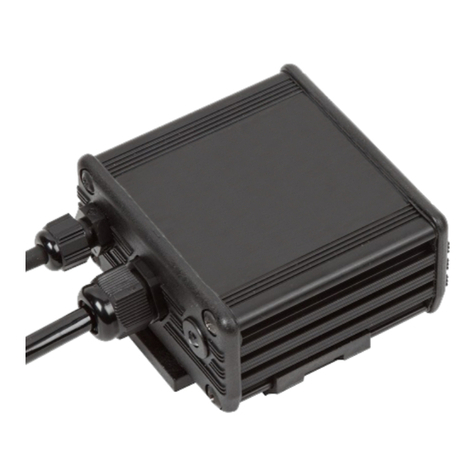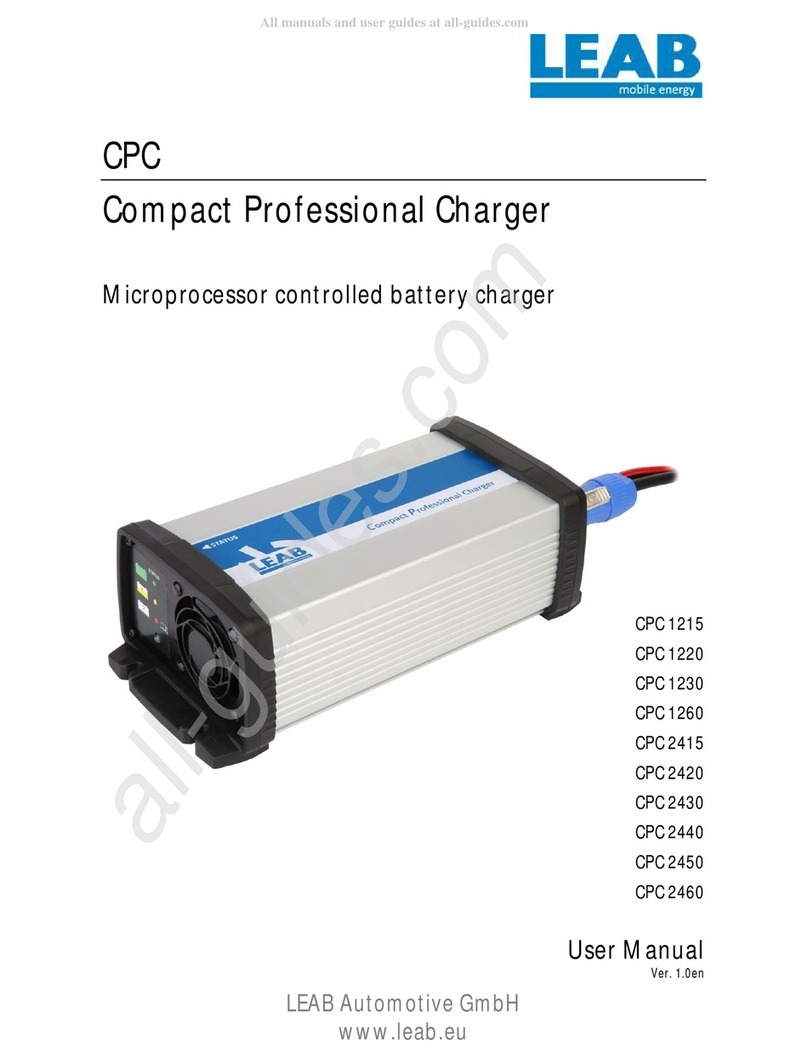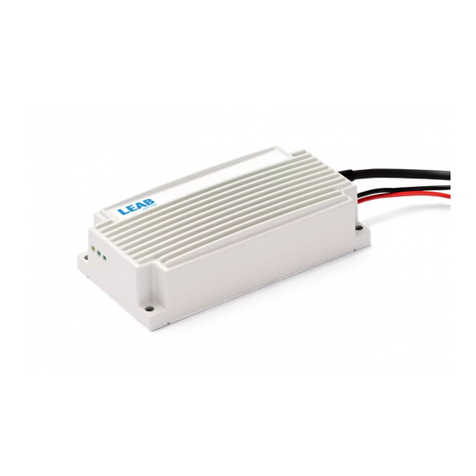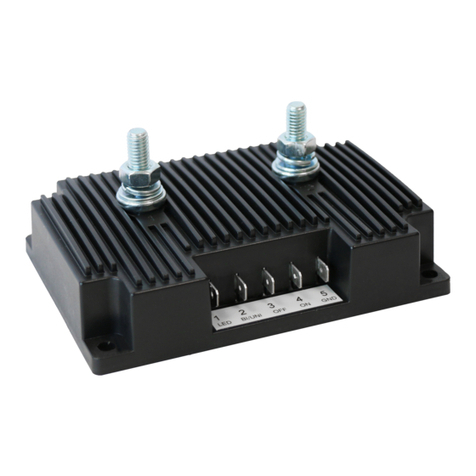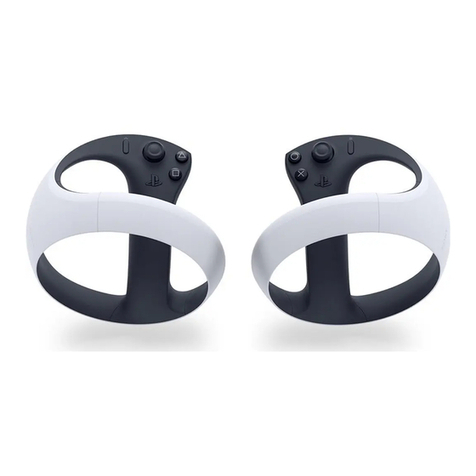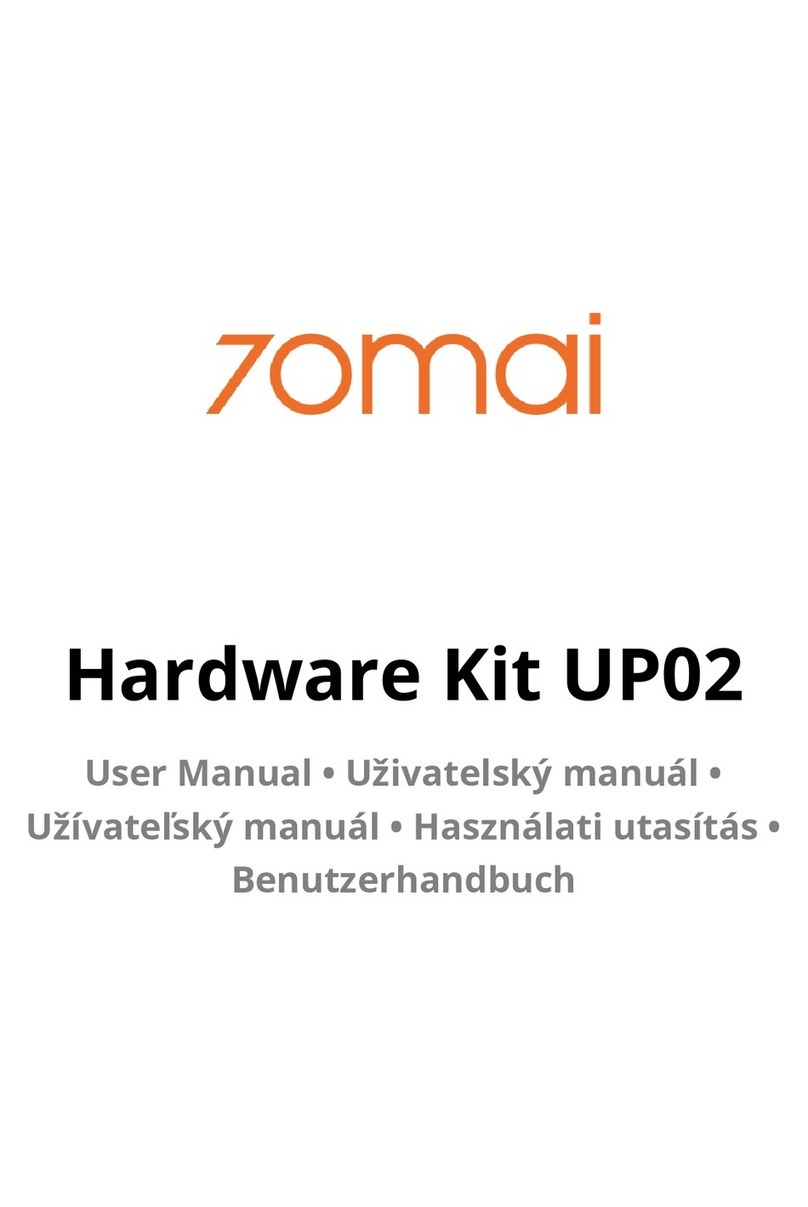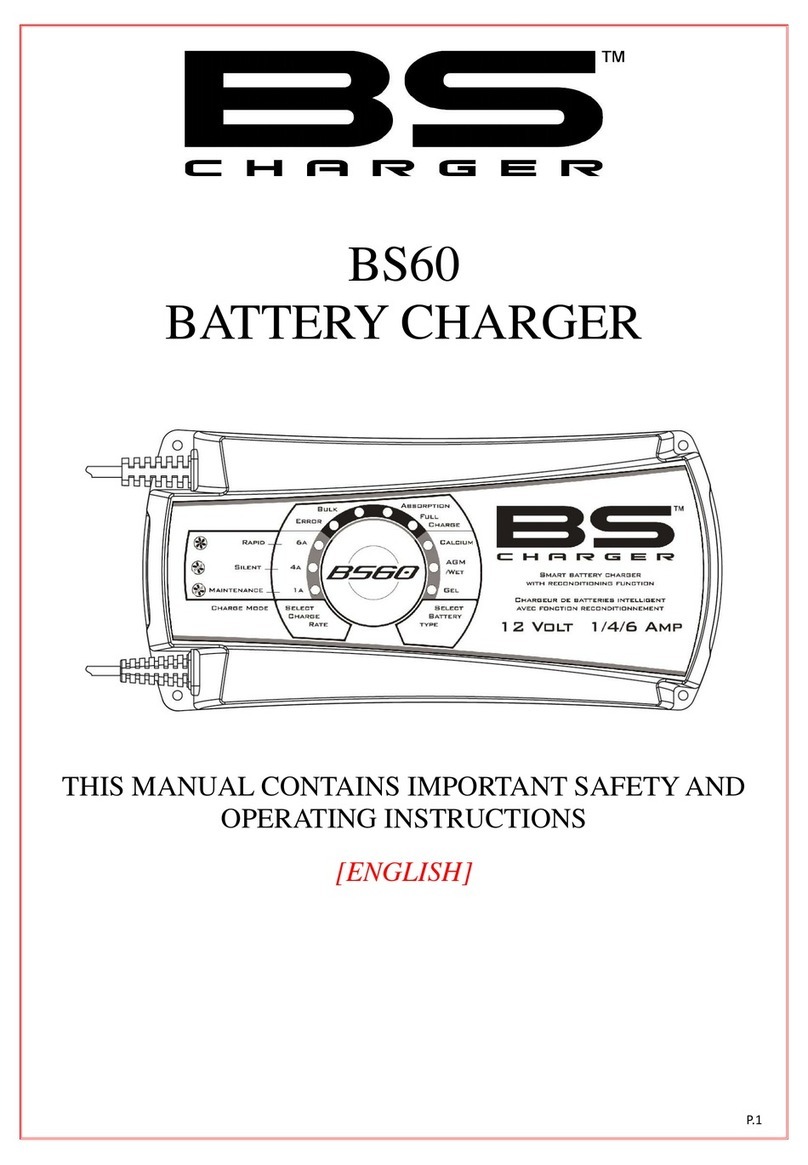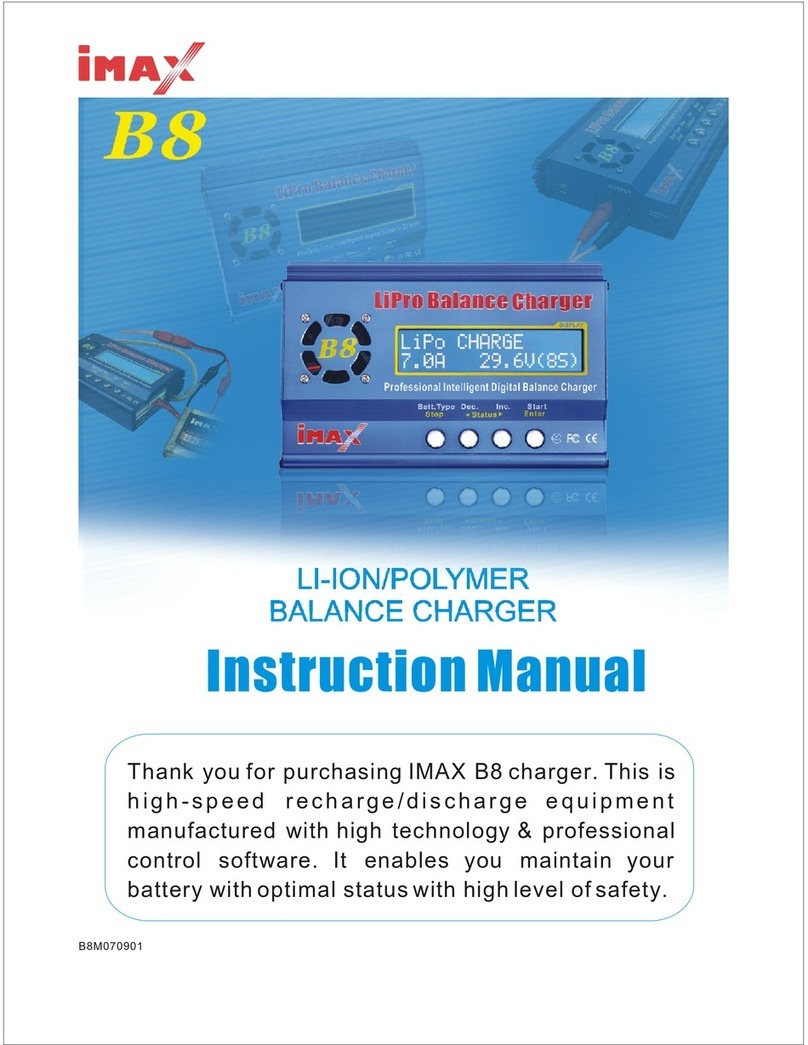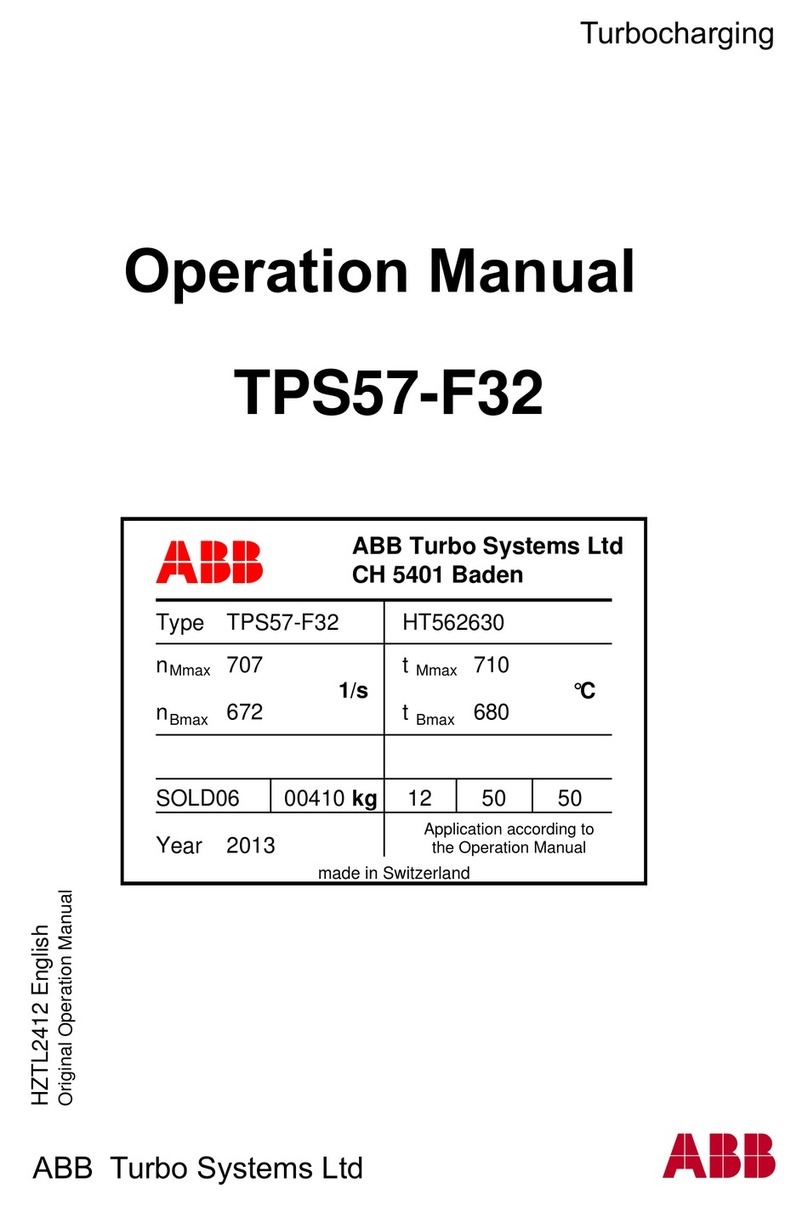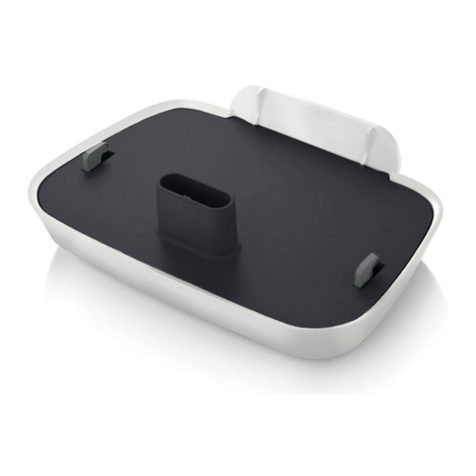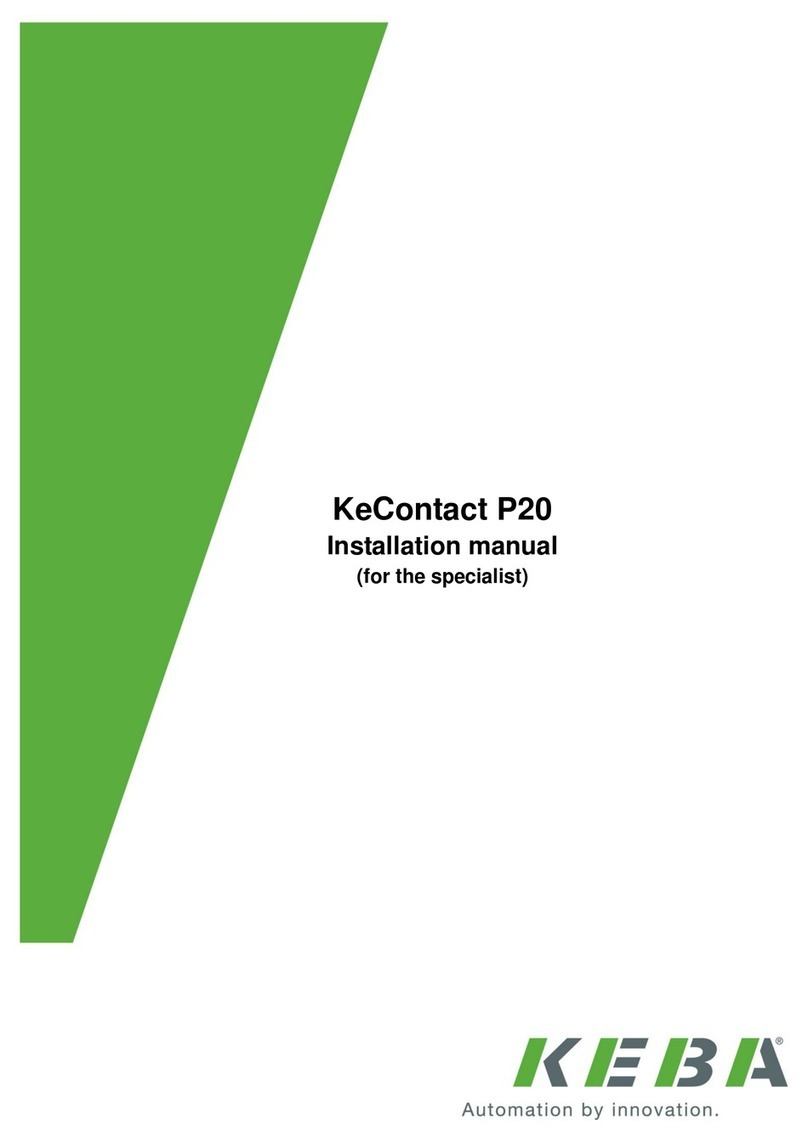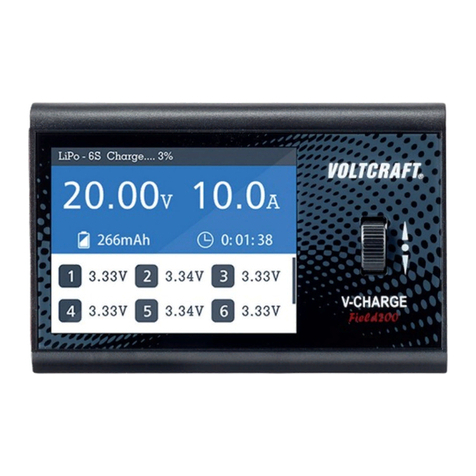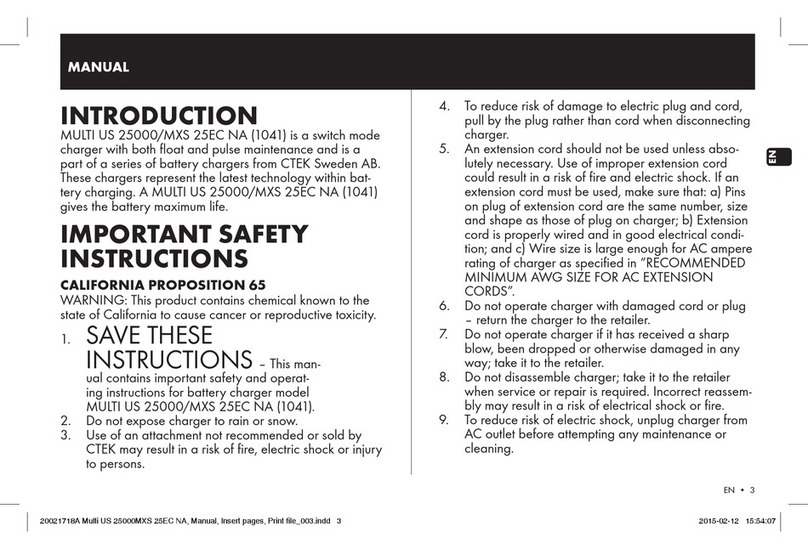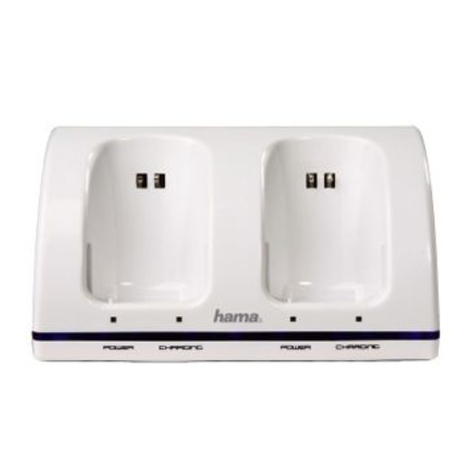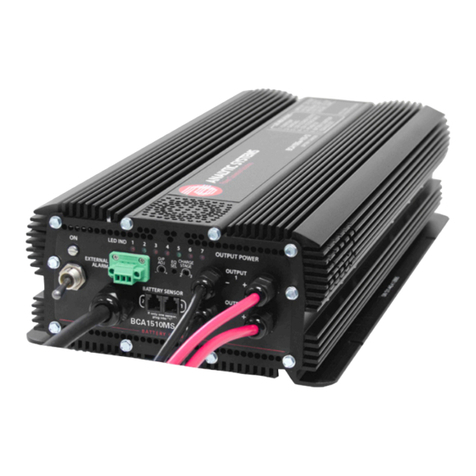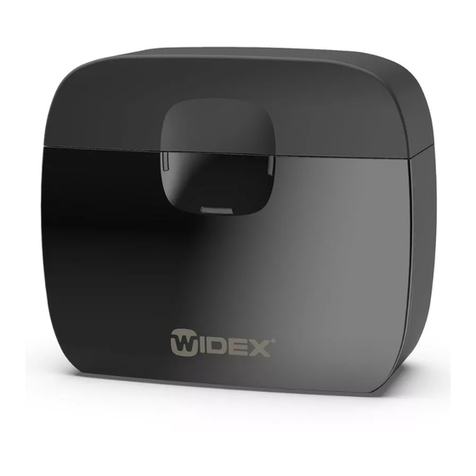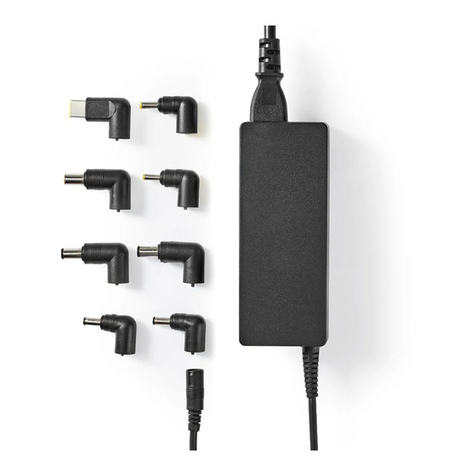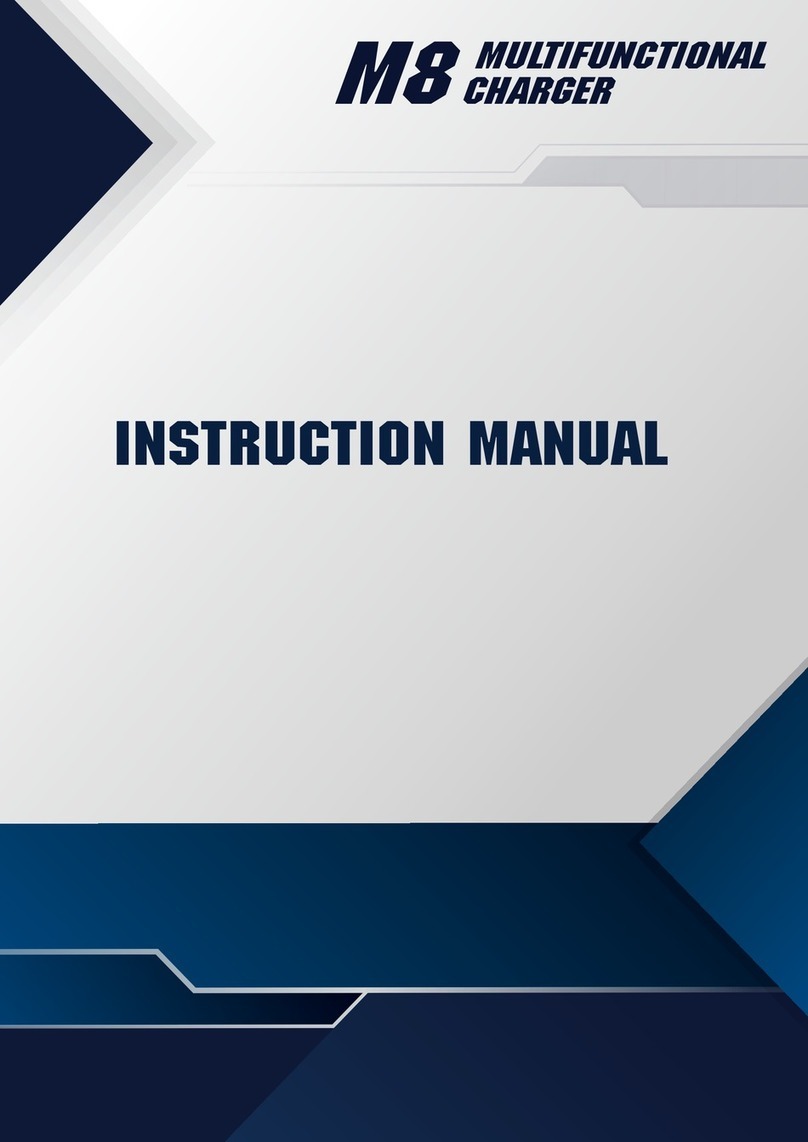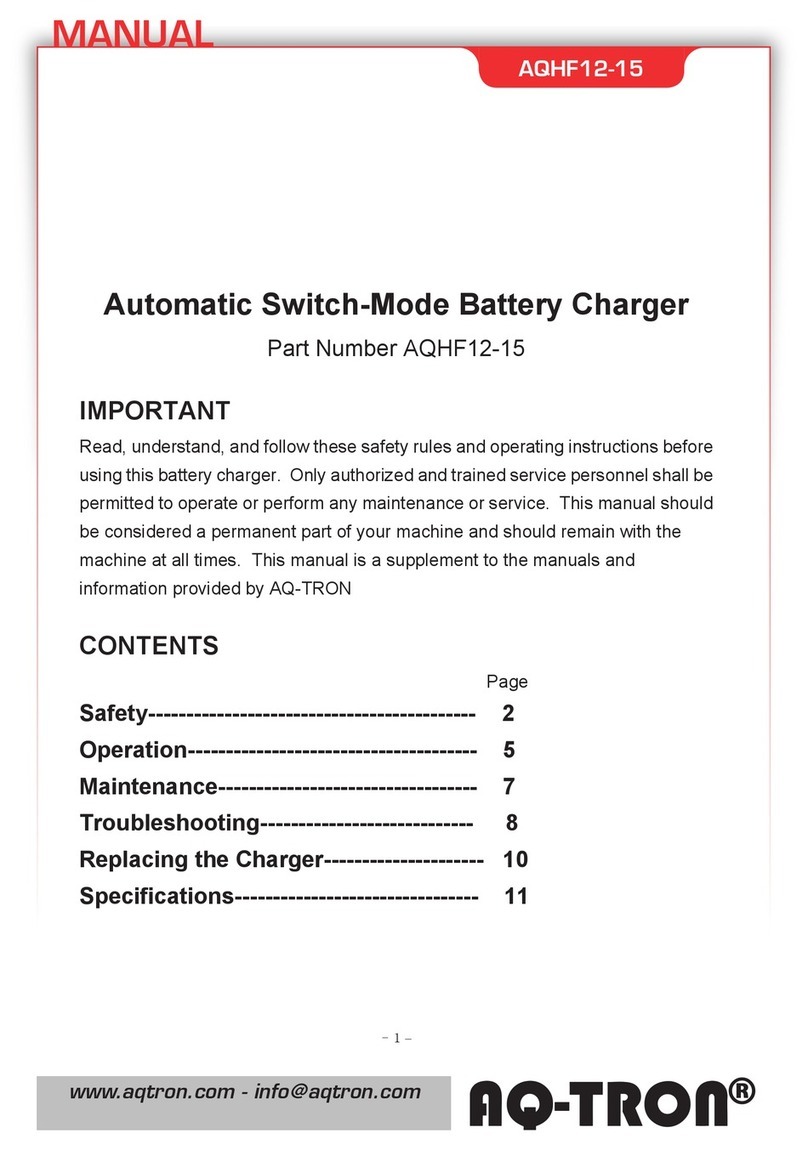LEAB CPC 1260 User manual

www.leab.eu
USER MANUAL
VERSION 1
16/09/2021
BATTERY CHARGER
CPC
LEAB Automotive GmbH Thorshammer 6 24866 Busdorf

Table of Contents
1 About this Manual................................................................................. 3
2 Safety .................................................................................................... 4
2.1 Intended use ...................................................................................... 5
2.2 Foreseeable misuse ........................................................................... 6
3 About this product................................................................................. 7
4 Technical specifications ......................................................................... 9
5 Charging characteristics ......................................................................... 14
6 Setting charging characteristics.............................................................. 15
7 Assembly ............................................................................................... 16
8 Installation ............................................................................................ 17
8.1 Connecting the battery ...................................................................... 17
8.2 Connecting the unit to the 230 V mains ............................................ 17
8.3 Connecting the sensor cable.............................................................. 18
8.4 Connecting the CBL control relay....................................................... 18
8.5 Connecting the remote display.......................................................... 19
9 Operation .............................................................................................. 19
9.1 Switching on the unit ......................................................................... 19
9.2 Charging the battery .......................................................................... 19
9.3 LED status display on the charger...................................................... 20
9.4 Power supply unit function................................................................ 20
9.5 Switching off the unit......................................................................... 20
10 Maintenance ......................................................................................... 21
11 Disposal................................................................................................. 22
12 EU Declaration of Conformity ................................................................ 22
Table of Contents LEAB Automotive GmbH

1 About this Manual
Read this manual carefully and keep it in a safe place. This manual is aimed at
Skilled workers in the field of automotive electrics.
Any modifications to the product or its components are prohibited and do not
conform to its intended use. Only use original LEAB or LEAB-approved ac-
cessories.
Throughout the manual, you will be alerted to warnings and safety notices
about potential hazards associated with handling the device. The colours and
signal words indicate the severity of the hazard:
Notice
Possibility of material damage
The signal word Attention indicates that there is a possibility of
material damage. To avoid material damage, follow the
instruction.
CAUTION
Danger that can lead to minor injuries
Safety instructions with the signal word CAUTION indicate a
hazard which, if not avoided, can result in minor or moderate
injury. Read the safety instructions carefully and follow them to
avoid the hazard.
WARNING
Hazards that can lead to severe injuries or death
Safety instructions with the signal word WARNING indicate a
hazard which, if not avoided, can result in death or severe injury.
Read the safety instructions carefully and follow them to avoid
the hazard.
3LEAB Automotive GmbH Thorshammer 6 24866 Busdorf
LEAB Automotive GmbH 1 About this Manual

DANGER
Danger that will lead to severe injury or death
Safety instructions with the signal word Danger indicate a hazard
which, if not avoided, will result in death or severe injury. Read
the safety instructions carefully and follow them to avoid the
hazard.
You will find useful tips and tricks in certain parts of the manual. These appear
as follows:
TIP
Tips provides additional, useful information.
Read the tip carefully and follow the instructions where
applicable.
2 Safety
This manual will help you to handle the unit safely. Use the unit solely in ac-
cordance with its intended use. Observe the safety instructions. Keep this user
manual in an easily accessible place.
Any modifications to the unit or its components are prohibited and do not
conform to its intended use.
4 LEAB Automotive GmbH Thorshammer 6 24866 Busdorf
2 Safety LEAB Automotive GmbH

2.1 Intended use
The charger has been developed for permanent installation in vehicles for
charging Lead-acid batteries (wet, gel, AGM). The unit is designed for a tem-
perature range of -30°C ... 60°C. Do not charge batteries with this charger
outside the specified temperature range. At higher temperatures, the output
power of the charger automatically decreases.
WARNING
Risk of fire from overheated battery
Flammable gases can escape if the battery overheats.
1. Always charge batteries in well-ventilated rooms and away
from ignition sources.
WARNING
Burns from escaping acid
Acid can leak out when handling batteries.
1. Wear acid-proof clothing when handling batteries.
WARNING
Risk of injury from damaged, frozen or deformed batteries
Damaged, frozen or deformed batteries can cause injuries.
1. Before using the battery, make sure that the battery is un-
damaged and the electrolyte is not frozen.
5LEAB Automotive GmbH Thorshammer 6 24866 Busdorf
LEAB Automotive GmbH 2 Safety

2.2 Foreseeable misuse
The charger is designed solely for Interior use in vehicles and workshops.
Never assemble the charger outside the vehicle. The charger is designed to
charge all types of Lead-acid batteries (wet, gel, AGM) batteries. Charge only
lead-acid battery batteries with the charger.
To avoid damage, never pinch the leads of the charger. In the event of dam-
age, unplug the charger immediately and contact your dealer or LEAB.
Notice
Device defects from incorrect installation
Incorrect installation can result in device defects.
1. Install the device in a dry and cool location.
6 LEAB Automotive GmbH Thorshammer 6 24866 Busdorf
2 Safety LEAB Automotive GmbH

3 About this product
The CPC charger is a battery charger for permanent installation in vehicles as
well as for workshop use. The robust and rubberised mounting rim allows for
both secure, vibration-free and particularly easy attachment in the vehicle
and - when used as a portable charger - laying down of the unit without the
risk of damaging the sensitive vehicle surface. Installation is made much easier
by a Neutrik connector and highly flexible Twinflex charging cables.
With 15 pre-programmed charging characteristics, the CPC can be set to
charge wet, gel or AGM lead batteries and the appropriate battery capacity.
For particularly gentle charging, a temperature sensor can be connected as an
option.
1 2 3 4
Fig.1: Front side of CPC charger
1 Fan 2 Reset button
3 Potentiometer 4 LED status display
7LEAB Automotive GmbH Thorshammer 6 24866 Busdorf
LEAB Automotive GmbH 3 About this product

1 2 3 4 5 6
Fig.2: CPC charger connection side
1 AC connection (Neutrik) 2 Positive cable (DC)
3 Negative cable (DC) 4 CBL connection
5 Sensor cable connection (CTS/
TS)
6 Remote display connection
8 LEAB Automotive GmbH Thorshammer 6 24866 Busdorf
3 About this product LEAB Automotive GmbH

4 Technical specifications
Part no.: 0101036970 Part no.: 0101036971
Modell CPC 1260 CPC 2440
Battery type Lead acid (wet, gel/AGM) Lead acid (wet, gel/AGM)
Battery capacity 150 Ah ... 600 Ah 120 Ah ... 400 Ah
Charging characterist-
ics
15 optional characteristics
(see characteristics sheet)
15 optional characteristics
(see characteristics sheet)
AC cable 1.5 m, Neutrik 1.5 m, Neutrik
DC cable 1.5 m, open 1.5 m, open
Charging current 60 A 40 A
Ripple < 3 % < 3 %
Main charging 14.4 V/ 14.2 V/ 14.4 V 28.8 V/ 28.2 V/ 28.8 V
Trickle charging 13.5 V/ 13.6 V/ 13.8 V 27.0 V/ 27.2 V/ 27.6 V
Input voltage 230 V 230 V
Input frequency 50 Hz 50 Hz
Quiescent current
(from the battery)
< 2 mA < 2 mA
Switching frequency 100 kHz 100 kHz
Operating temperat-
ure
-30 °C ... +60 °C -30 °C ... +60 °C
International Protec-
tion (IP class)
IP21 IP21
Protection class I I
Dimensions (L x W x H) 294 mm x 135 mm x 95
mm
294 mm x 135 mm x 95
mm
Weight 2.2 kg 2.2 kg
9LEAB Automotive GmbH Thorshammer 6 24866 Busdorf
LEAB Automotive GmbH 4 Technical specifications

Part no.: 0101036900 Part no.: 0101036901
Modell CPC 1215 CPC 1220
Battery type Lead acid (wet, gel/AGM) Lead acid (wet, gel/AGM)
Battery capacity 50 Ah ... 150 Ah 60 Ah ... 200 Ah
Charging characterist-
ics
15 optional characteristics
(see characteristics sheet)
15 optional characteristics
(see characteristics sheet)
AC cable 1.5 m, Neutrik 1.5 m, Neutrik
DC cable 1.5 m, Phoenix contact 1.5 m, Phoenix contact
Charging current 15 A 20 A
Ripple < 3 % < 3 %
Main charging 14.4 V/ 14.2 V/ 14.4 V 14.4 V/ 14.2 V/ 14.4 V
Trickle charging 13.5 V/ 13.6 V/ 13.8 V 13.5 V/ 13.6 V/ 13.8 V
Input voltage 230 V 230 V
Input frequency 50 Hz 50 Hz
Quiescent current
(from the battery)
< 2 mA < 2 mA
Switching frequency 100 kHz 100 kHz
Operating temperat-
ure
-30 °C ... +60 °C -30 °C ... +60 °C
International Protec-
tion (IP class)
IP21 IP21
Protection class I I
Dimensions (L x W x H) 264 mm x 127 mm x 86
mm
264 mm x 127 mm x 86
mm
Weight 1.5 kg 1.5 kg
10 LEAB Automotive GmbH Thorshammer 6 24866 Busdorf
4 Technical specifications LEAB Automotive GmbH

Part no.: 0101036902 Part no.: 0101036903
Modell CPC 2415 CPC 2420
Battery type Lead acid (wet, gel/AGM) Lead acid (wet, gel/AGM)
Battery capacity 50 Ah ... 150 Ah 60 Ah ... 200 Ah
Charging characterist-
ics
15 optional characteristics
(see characteristics sheet)
15 optional characteristics
(see characteristics sheet)
AC cable 1.5 m, Neutrik 1.5 m, Neutrik
DC cable 1.5 m, Phoenix contact 1.5 m, Phoenix contact
Charging current 15 A 20 A
Ripple < 3 % < 3 %
Main charging 28.8 V/28.2 V/28.8 V 28.8 V/28.2 V/28.8 V
Trickle charging 27.0 V/ 27.2 V/ 27.6 V 27.0 V/ 27.2 V/ 27.6 V
Input voltage 230 V 230 V
Input frequency 50 Hz 50 Hz
Quiescent current
(from the battery)
< 2 mA < 2 mA
Switching frequency 100 kHz 100 kHz
Operating temperat-
ure
-30 °C ... +60 °C -30 °C ... +60 °C
International Protec-
tion (IP class)
IP21 IP21
Protection class I I
Dimensions (L x W x H) 264 mm x 127 mm x 86
mm
264 mm x 127 mm x 86
mm
Weight 1.5 kg 1.5 kg
11LEAB Automotive GmbH Thorshammer 6 24866 Busdorf
LEAB Automotive GmbH 4 Technical specifications

Part no.: 0101036972 Part no.: 0101036973
Modell CPC 2450 CPC 2460
Battery type Lead acid (wet, gel/AGM) Lead acid (wet, gel/AGM)
Battery capacity 140 Ah ... 500 Ah 150 Ah ... 600 Ah
Charging characterist-
ics
15 optional characteristics
(see characteristics sheet)
15 optional characteristics
(see characteristics sheet)
AC cable 1.5 m, Neutrik 1.5 m, Neutrik
DC cable 1.5 m, open 1.5 m, open
Charging current 50 A 60 A
Ripple < 3 % < 3 %
Main charging 28.8 V/ 28.2 V/ 28.8 V 28.8 V/ 28.2 V/ 28.8 V
Trickle charging 27.0 V/ 27.2 V/ 27.6 V 27.0 V/ 27.2 V/ 27.6 V
Input voltage 230 V 230 V
Input frequency 50 Hz 50 Hz
Quiescent current
(from the battery)
< 2 mA < 2 mA
Switching frequency 100 kHz 100 kHz
Operating temperat-
ure
-30 °C ... +60 °C -30 °C ... +60 °C
International Protec-
tion (IP class)
IP20 IP20
Protection class I I
Dimensions (L x W x H) 294 mm x 135 mm x 95
mm
294 mm x 135 mm x 95
mm
Weight 2.2 kg 2.2 kg
12 LEAB Automotive GmbH Thorshammer 6 24866 Busdorf
4 Technical specifications LEAB Automotive GmbH

Part no.: 0101036930 Part no.: 0101036931
Modell CPC 1230 CPC 2430
Battery type Lead acid (wet, gel/AGM) Lead acid (wet, gel/AGM)
Battery capacity 90 Ah ... 300 Ah 90 Ah ... 300 Ah
Charging characterist-
ics
15 optional characteristics
(see characteristics sheet)
15 optional characteristics
(see characteristics sheet)
AC cable 1.5 m, Neutrik 1.5 m, Neutrik
DC cable 1.5 m, Phoenix contact 1.5 m, Phoenix contact
Charging current 30 A 30 A
Ripple < 3 % < 3 %
Main charging 14.4 V/ 14.2 V/ 14.4 V 28.8 V/28.2 V/28.8 V
Trickle charging 13.5 V/ 13.6 V/ 13.8 V 27.0 V/ 27.2 V/ 27.6 V
Input voltage 230 V 230 V
Input frequency 50 Hz 50 Hz
Quiescent current
(from the battery)
< 2 mA < 2 mA
Switching frequency 100 kHz 100 kHz
Operating temperat-
ure
-30 °C ... +60 °C -30 °C ... +60 °C
International Protec-
tion (IP class)
IP21 IP21
Protection class I I
Dimensions (L x W x H) 264 mm x 127 mm x 86
mm
264 mm x 127 mm x 86
mm
Weight 1.5 kg 1.5 kg
13LEAB Automotive GmbH Thorshammer 6 24866 Busdorf
LEAB Automotive GmbH 4 Technical specifications

5 Charging characteristics
The CPC charger contains 15 different charging characteristics which you can
select before connecting to the battery. Battery charging is fully automatic
and micro-processor controlled with a 3-stage IU1U2 characteristic curve for
gentle and optimum charging of the batteries.
Fig.3: Charging Characteristic
I phase: Charging with constant current
Depending on the battery charge state, the battery is charged with maximum
charging current to store as much energy as possible in the battery. After
reaching the set main charging voltage, the charger switches to the next char-
ging phase (U1). If the set main voltage is not reached within max. 10 hours,
the unit enters the U2 phase and reports an error.
NOTE!Deep discharged batteries with a voltage below 6 V or 12 V are not
charged for safety reasons.
14 LEAB Automotive GmbH Thorshammer 6 24866 Busdorf
5 Charging characteristics LEAB Automotive GmbH

U1 phase: Main charging with constant voltage
In the main charging phase, the voltage is kept at a constant value. As the bat-
tery increasingly charges, the current decreases continuously and approaches
a lower limit.
Battery Type Main charge voltage
Gel battery 12 V 14.4 V
Wet cell battery 12 V 14.2 V
Gel battery 24 V 28.8 V
Wet cell battery 24 V 28.2 V
U2 phase: Trickle charge with reduced voltage
In this phase, the charging voltage is reduced in order to maintain the battery
charge for an unlimited period and counteract self-discharge. Additionally
connected consumers are supplied via the charger in this phase without load-
ing the battery.
Battery Type Main charge voltage
Gel battery 12 V 13.8 V
Wet cell battery 12 V 13.6V
Gel battery 24 V 27.6 V
Wet cell battery 24 V 27.2 V
6 Setting charging characteristics
Notice
Battery defect due to incorrect charging
To protect the battery from damage due to incorrect charging, set
a suitable charging characteristic before installation. Follow the
battery manufacturer's instructions.
To set a charging characteristic, perform the following steps:
1. Turn the potentiometer to the desired position (see characteristics sheet in
Appendix).
15LEAB Automotive GmbH Thorshammer 6 24866 Busdorf
LEAB Automotive GmbH 6 Setting charging characteristics

NOTE!The arrow in the middle of the potentiometer indicates the selected
characteristic.
2. To prevent accidental adjustment of the charging characteristic, stick the
supplied sticker on the potentiometer. NOTE!Ensure that the notch in the
sticker is above the LED.
ðThe charging characteristic is set.
7 Assembly
5
mm
Fig.4: CPC assembly
To assemble the unit, proceed as follows:
Notice
Device defects from incorrect installation
Incorrect installation can result in device defects.
1. Install the device in a dry and cool location.
üChoose a cool, dry and well-ventilated assembly site.
üDo not mount the unit directly next to or above batteries.
16 LEAB Automotive GmbH Thorshammer 6 24866 Busdorf
7 Assembly LEAB Automotive GmbH

üOptimum cooling is achieved by mounting the unit vertically on a flat sur-
face.
1. Fasten the unit with screws to the 4 lateral holes on the side (5 mm Ø).
ðThe unit is assembled.
8 Installation
8.1 Connecting the battery
To connect the charger to the battery, proceed as follows:
1. Disconnect the battery from the vehicle power circuit.
WARNING!Disconnect the negative cable first.
2. Secure the positive cable of the device as close as possible to the vehicle
battery with a suitable fuse.
3. Connect the positive cable of the unit to the positive terminal of the bat-
tery.
4. Connect the negative cable of the unit to the negative terminal of the bat-
tery.
5. Connect the vehicle battery to the vehicle power circuit again.
ðThe battery is connected.
8.2 Connecting the unit to the 230 V mains
Fig.5: Neutrik plug
connection
To connect the unit to the 230 V mains, proceed as fol-
lows:
1. Fit the Neutrik plug in the AC connection.
2. Turn the Neutrik plug clockwise until it clicks into
place.
NOTE!The two-pin earthed plug is only suitable for con-
nection to fused, earthed 230 V mains supplies.
3. Plug the two-pin earthed plug into a 230-V mains sup-
ply.
ðThe charger is connected to the 230 V mains supply.
17LEAB Automotive GmbH Thorshammer 6 24866 Busdorf
LEAB Automotive GmbH 8 Installation

8.3 Connecting the sensor cable
The unit is compatible with two different sensor cable. The TS sensor cable
measures the battery temperature to optimally charge the battery. The CTS
sensor cable measures the battery temperature and voltage to optimally
charge the battery.
NOTE!When connecting, pay attention to the instructions and notes in the
sensor cable installation instructions.
To connect the sensor cable, proceed as follows:
1. Insert the plug of the sensor cable into the connection for the temperature
sensor on the back of the unit.
ðThe sensor cable is connected.
8.4 Connecting the CBL control relay
A potential-free changeover contact is integrated in the
CPC chargers, which switches during charging. This op-
tion can be used, for example, to implement an electrical
start interlock with 230 V connection or charge monitor-
ing.
Switching function of the changeover contact
– Pin 1 and pin 3 are connected when the charger is
switched off.
– Pin 1 and pin 2 are connected when the charger is
switched on.
Technical Data (insula-
tion)
Capacity (max.values)
Output to housing 500 V 24 V(DC): 0.5 A
Output to ground 120 V 120 V(AC): 0.5 A
To connect the CBL control relay, proceed as follows:
1. Plug the RJ plug connector into the connector for the
CBL relay.
ðThe CBL control relay is connected.
18 LEAB Automotive GmbH Thorshammer 6 24866 Busdorf
8 Installation LEAB Automotive GmbH

8.5 Connecting the remote display
The remote display shows the charge status of the battery via an LED.
To connect the remote display, proceed as follows:
1. Plug the connecting cable for the remote display into the connector for the
remote display of the charger.
ðThe remote display is connected.
9 Operation
9.1 Switching on the unit
To switch on the unit, proceed as follows:
1. Connect the mains plug to a 230 V mains supply.
ðCharging starts automatically.
ðThe unit is switched on.
9.2 Charging the battery
The charger begins to charge the battery as soon as it is switched on.
19LEAB Automotive GmbH Thorshammer 6 24866 Busdorf
LEAB Automotive GmbH 9 Operation

9.3 LED status display on the charger
Status Description Action
Steady light,
orange
Battery is charging.
The charger is in the main
charging phase.
Steady light,
green
Battery is fully charged, char-
ger is in trickle charge phase.
Charger can be switched off
and the battery can be used.
Steady light,
red
Error, overheating – Check battery connection
– Measure battery voltage
– Disconnect the unit from
the battery and allow it to
cool down.
Flashing, red Timeout in the main charge
phase, charging interrupted.
– Check battery
– Select larger charger
– Consumer too large: Switch
off consumer during char-
ging.
9.4 Power supply unit function
CPC chargers with a charge program with a starting voltage of 0 V can also be
used without a battery to supply DC consumers up to the maximum power of
the charger. It should be noted here that the output voltage drops from the
higher main charging voltage to the lower trickle charging voltage after a
short time.
Vehicles can continue to be supplied with voltage when the battery is re-
moved in order to avoid reprogramming the customer's own settings in the
on-board computer and radio system.
9.5 Switching off the unit
To switch off the unit, proceed as follows:
1. Disconnect the mains plug from the 230 V mains.
ðThe unit is switched off.
20 LEAB Automotive GmbH Thorshammer 6 24866 Busdorf
9 Operation LEAB Automotive GmbH
This manual suits for next models
9
Table of contents
Other LEAB Batteries Charger manuals

LEAB
LEAB CHAMP PRO 24 V User manual
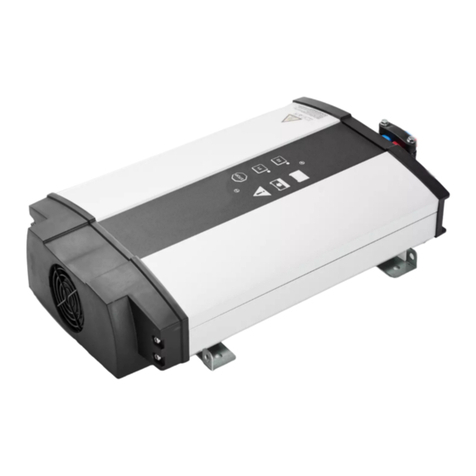
LEAB
LEAB RBC 1280 User manual
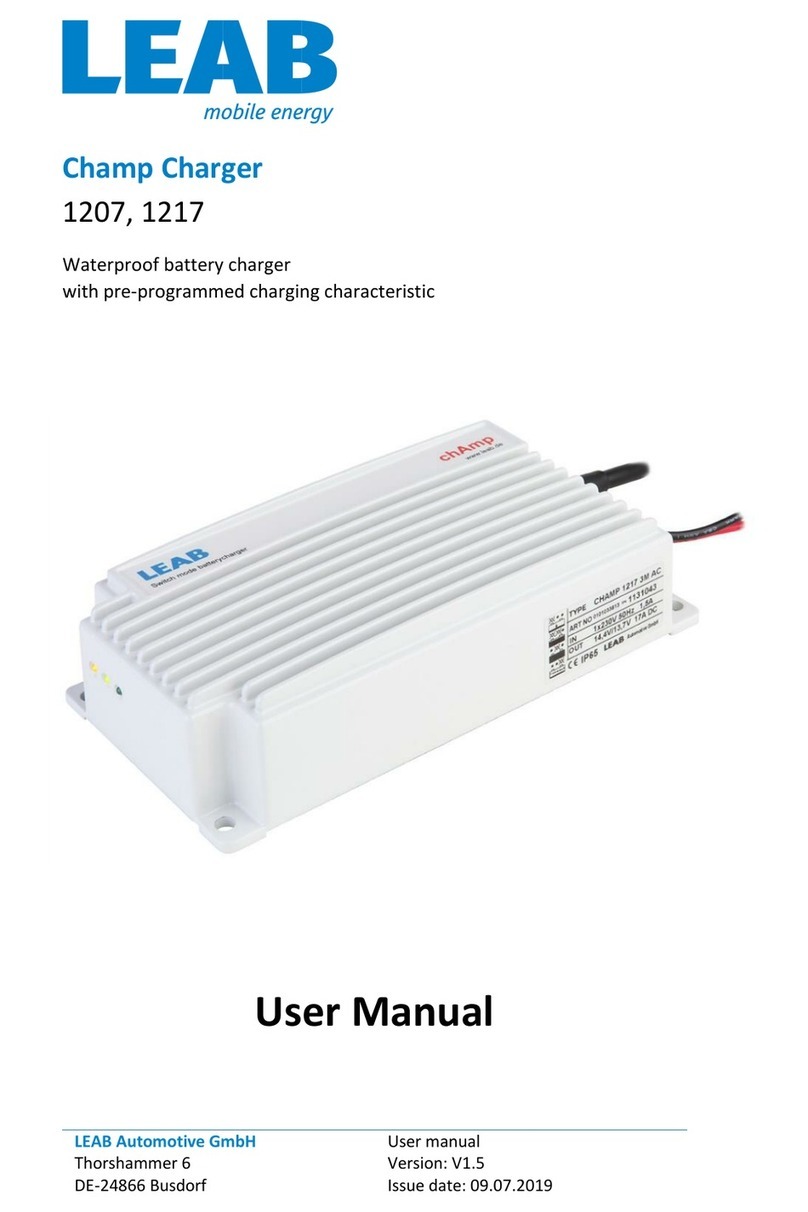
LEAB
LEAB Champ 1207 User manual
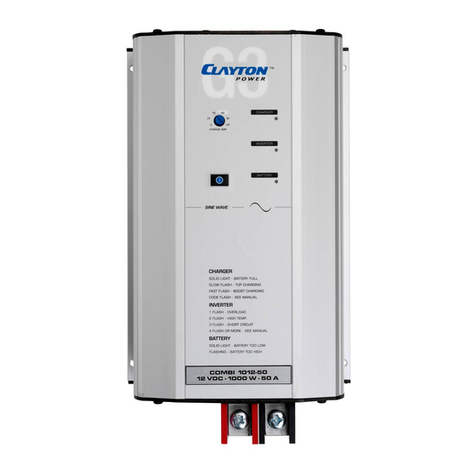
LEAB
LEAB Clayton Power G3 Combi 1012-50 User manual
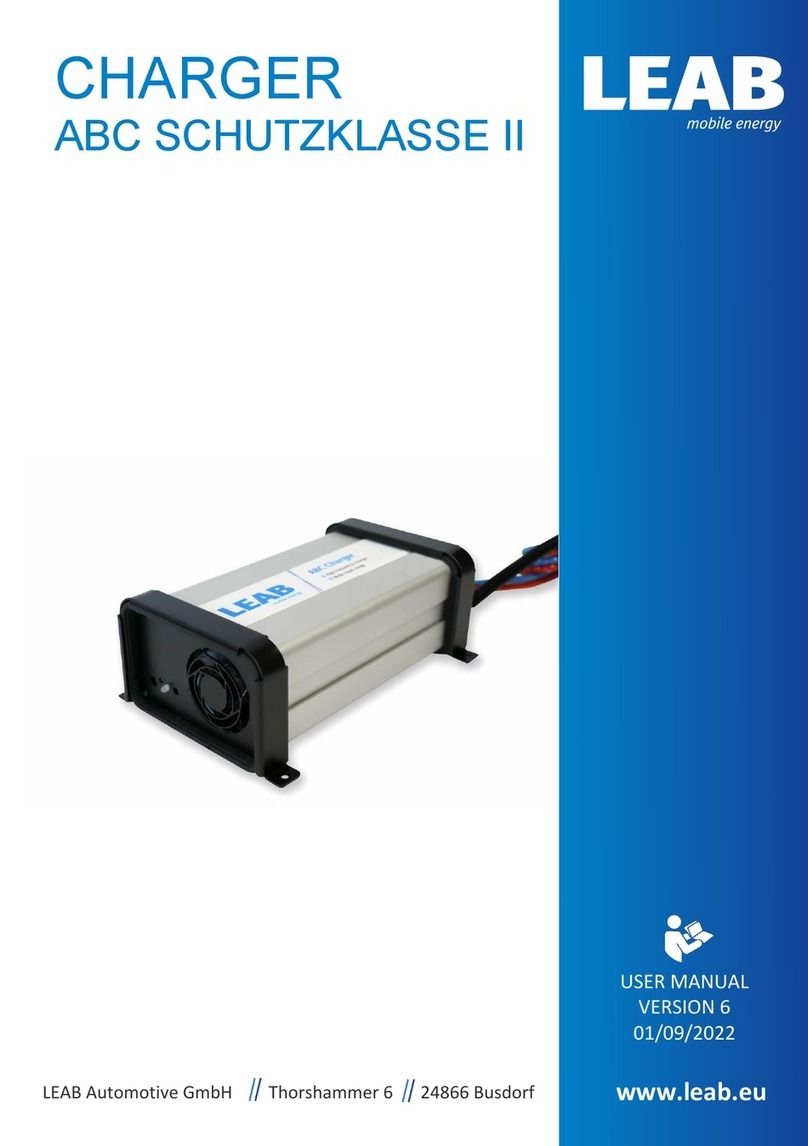
LEAB
LEAB ABC SCHUTZKLASSE II User manual
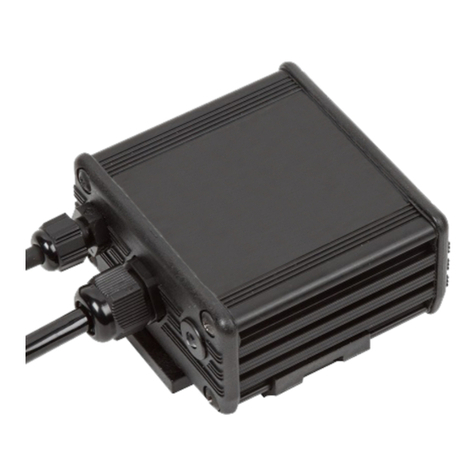
LEAB
LEAB TS 12 User manual

LEAB
LEAB RBC 1280 User manual
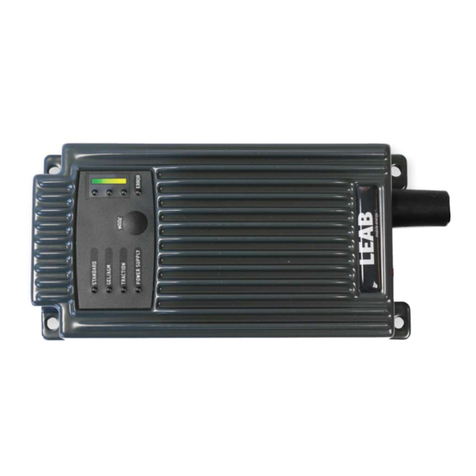
LEAB
LEAB Champ Pro 1217 User manual

LEAB
LEAB CHAMP 12 V User manual
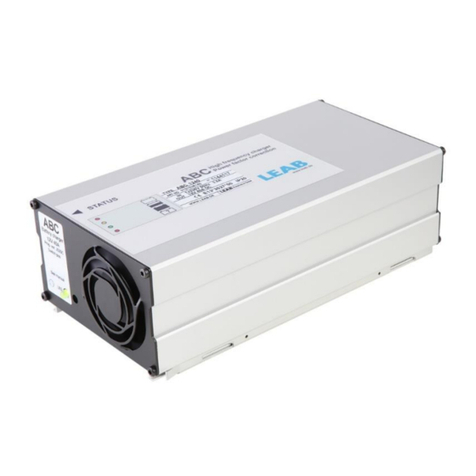
LEAB
LEAB ABC 1215 User manual
